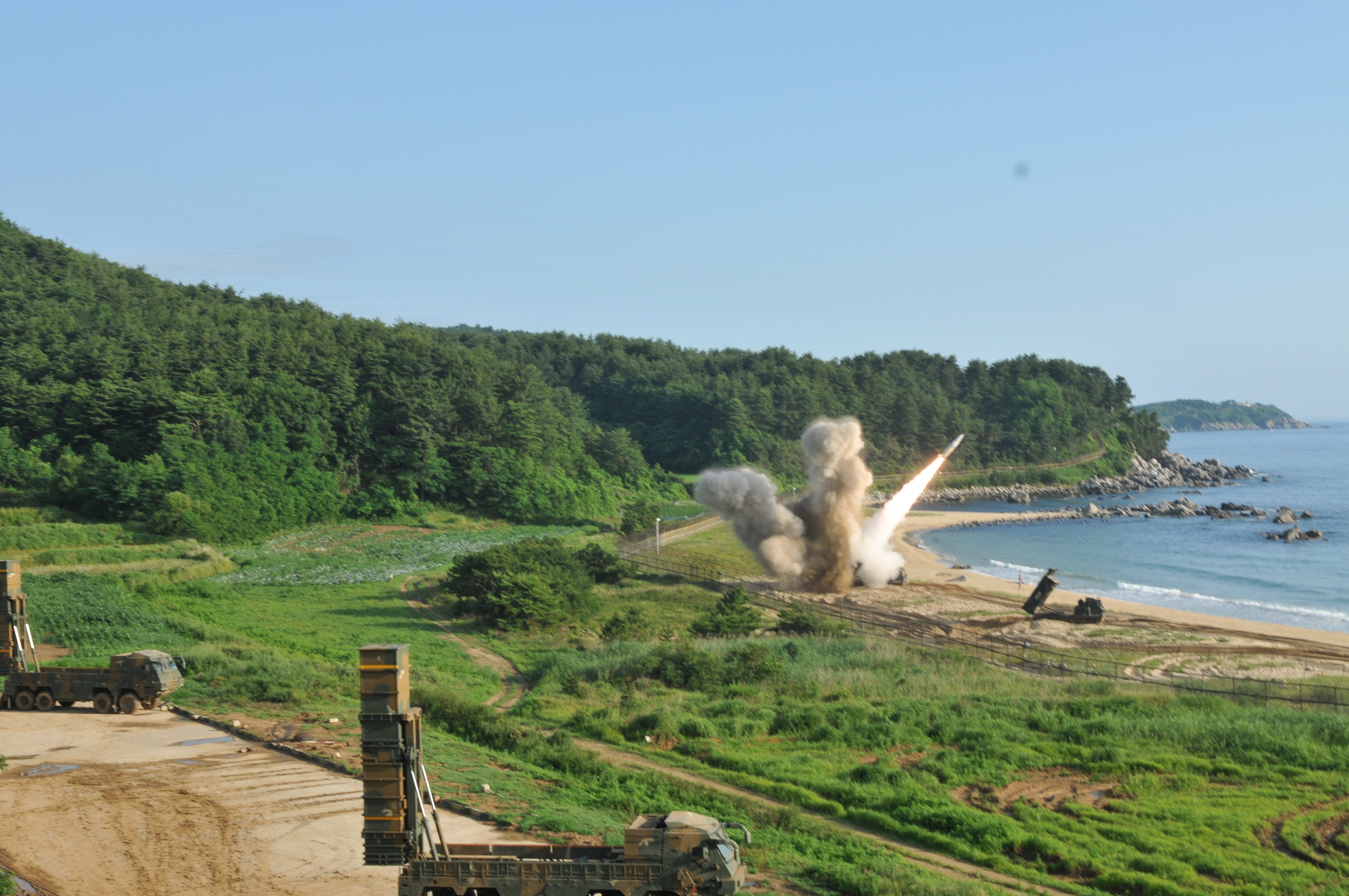US and Republic of Korea forces exercise missile systems in response to the July 4 test launch of an ICBM by North Korea. US Forces-Korea photo.
North Korea’s intercontinental ballistic missile test on Tuesday was of a type unseen before by the Pentagon, and traveled further than any previous test in a dramatic escalation of that country’s nuclear ambitions.
The July 4 test of the Hwasong-14 ICBM prompted a “snap” exercise by the US and Republic of Korea armies to demonstrate missile defense and surface-to-surface missile capabilities. The US Army fired the Army Tactical Missile System once, and the Republic of Korea fire its Hyunmoo Missile II into territorial waters on the East Coast of South Korea, US Forces-Korea said in a statement.
The launch took place at the Panghyon airfield, a location where the Pentagon had not previously seen any activity, Defense Department spokesman Navy Capt. Jeff Davis said Wednesday. The missile was fired from a mobile launcher, flew into space, through commercial airspace, and landed into Japanese-controlled waters where commercial vessels sail.
This type of launch, with no prior warnings to aircraft or ships, is “not what responsible nations do,” Davis said.
North American Aerospace Defense Command tracked the launch, and determined it was not threatening to the continent, even though it was traveling through international air and sea space, Davis said.
Initial Defense Department statements regarding the test called it an intermediate range missile; however, further assessments determined it was capable of traveling more than 5,500 kilometers. This, by international standards, made it an intercontinental missile.
The test shows North Korea’s “aggressive research and development” toward obtaining a nuclear missile, though it still has not been able to miniaturize a warhead or to refine the re-entry system for efficient targeting, Davis said.
The US is confident in its capability to defend itself, both with ground-based interceptors and a deployed Terminal High-Altitude Area Defense system in South Korea. While components of that system are still delayed in South Korea, it has reached initial operating capability and has “limited” missile defense capability, Davis said.
